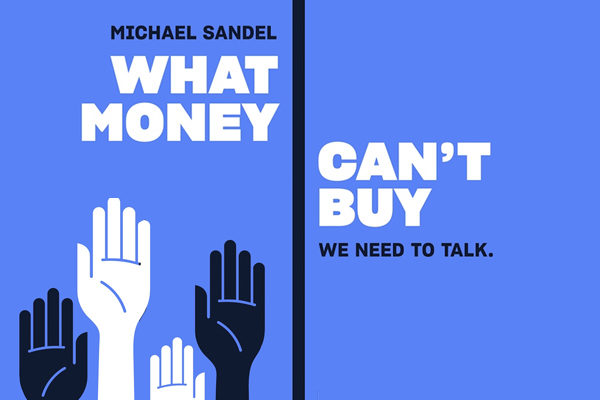Against the backdrop of a society that rarely questions the perceived superiority of “market-based” solutions, Michael Sandel skillfully explores the intersection between markets and morality. In a six-part video series, Sandel teaches viewers a very important lesson: in practice, there is no consensus on what a free market is, and what outcomes are optimal.
The video series “What Money Can’t Buy,” produced by the Institute for New Economic Thinking, takes viewers on a journey which compels them to critically engage with a series of questions that challenge the common perception that untethered markets provide optimal solutions to all problems. While the questions cover a variety of topics, ranging from selling organs to discrimination based on looks, the common thread is to highlight this: in economic terms, what could be seen as an optimal outcome is often not a desirable outcome for society.
By watching the series, one thing becomes evident: there is no clear line that marks where markets should begin or end. Furthermore, each individual has a different understanding of what counts as an optimal outcome. As we come to terms with the lack of clear answers, the perception that unregulated markets always objectively provide a better outcome is shattered.
Economics textbooks teach students that households and firms act as if they are guided by an invisible hand that leads them to desirable market outcomes. As everyone seeks to maximize their own utility, free markets allow individuals and firms to engage in mutually beneficial exchanges, with supply and demand determining ideal price and output levels. Thus, one should simply let markets work their magic — no outside intervention necessary.
However, not even Adam Smith, to whom the “invisible hand” observation is attributed, believed that unregulated markets can lead to the best outcomes for society. As Harvard professor Amartya Sen points out, Smith was aware of the limitation of free markets. He knew resources would be drained and society’s ills would go unaccounted for in the absence of government.
Today, it is largely accepted that governments do need to play some role in setting and enforcing rules that enable markets to operate. For example, it is not controversial that property right and contract enforcement are government actions that enable markets to function, and would not be considered an intervention.
What is less acknowledged by those who oppose regulation under the guise of protecting free markets, is that the boundaries between what is considered a necessary rule and what is labeled as intervention have consistently changed throughout time, along with what our societies have deemed acceptable or not. The idea of what should and should not be sold on the market has constantly evolved.
Cambridge economist Ha-Joon Chang points this out using a simple example: child labor. In our present society, not allowing young children to work is something that seems natural. Yet, in early industrial days, this was a heated debate. Opponents called the ban an intervention in free markets and the infringement on the child’s right to sell its labor.
“What Money Can’t Buy” showcases interviews with a number of prominent academics from across the ideological spectrum, such as Joseph Stiglitz, Larry Summers, Minouche Shafik, and Greg Mankiw, as well as discussions amongst a group of students. Each episode features Sandel asking participants a sequence of questions around a specific theme, leaving it up to each of the respondents draw their own lines on what should or should not be a market good.
The interviews present a variety of responses and arguments both in favor and against allowing markets to operate in various areas of our lives, and whether allowing markets in those areas would lead to better or worse outcomes for society. There is no consensus on what counts as basic regulation, or when a market is no longer “free”.
There are no right or wrong answers to any of the questions. However, this does not mean that the responses offered by participants are not challenged. Sandel consistently asks for further elaboration on the answers, and explanations for the reasoning behind those responses. What makes the series truly thought provoking is the way in which Sandel then asks respondents if they are comfortable applying the same pro-market argument to a somewhat similar, but instinctively more morally questionable situation.
Throughout the series, it becomes clear that often the arguments in favor of having a market for something, such as kidneys, operate in a vacuum which does not take into account the large inequities and power dynamics of our society. For example, Mankiw defends the need to have a market for kidneys by claiming it would lead to more donors, and more lives saved, thus improving outcomes for society overall. Yet, as Stiglitz points out, in our unequal society, would those selling their kidneys do so as a voluntary transaction, or be coerced by their economic despair? Furthermore, selling kidneys in a market would mean the price would be too high for many people to pay, thus effectively letting poorer people die to save those who are wealthy.
What Money Can’t Buy does not provide any concrete answers to the questions discussed, and does not decide for its viewers what is right, or wrong. That is not its goal. Instead, Sandel encourages viewers to engage with the questions and critically think about the role markets play in our lives, how they are structured, and who they inherently favor. As the series makes clear, there is no objective way to define a free market or what counts as intervention, and thus it encourages us to think about morality and what type of society we wish to live in and incorporate those principles in the way markets influence our lives.
Watch the series here.

